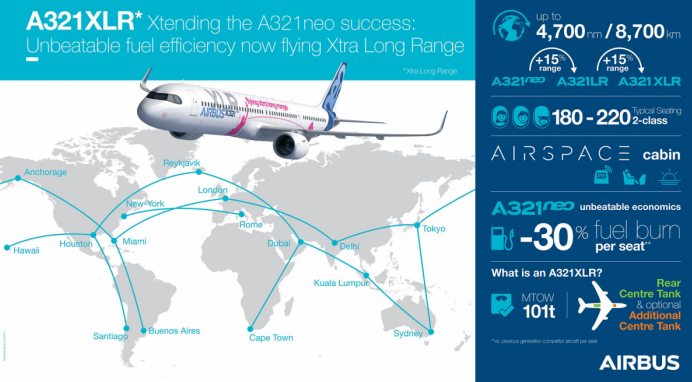Why The A321XLR Will Change The Way We Fly In Two Years
Since the announcement of the A321XLR in 2019, the jet has been the topic of hot discussion. The plane marks the longest range on a single-aisle aircraft ever, opening up new routes and boosting efficiency. However, the plane could have a noticeable impact on the market once it takes to the skies in 2023. Let’s understand why.
Filling a gap in the market
For years, airlines have been looking for a plane that fills the middle of the market, the space between narrowbody and widebody aircraft. This plane would ideally seat 220-260 passengers, fly nearly 5,000nm, and be highly fuel-efficient. Boeing was the first to consider such a plane but then opted to reengineer the 737 instead (which resulted in the infamous 737 MAX). However, it was Airbus which created the first offering and pulled the rug out from under Boeing’s plans.
The A321XLR can fly 4,700nm and seat anywhere between 175 and 244 passengers, depending on the cabin configuration. The plane is also marketed as being nearly 15-20% more efficient than the A320neo. With such features, the A321XLR clearly checks all the boxes for a middle-market jet and does all this in a narrowbody, rather than a wide, twin-aisle jet.

Where can the plane go?
To better understand the A321XLRs groundbreaking range we can look at a number of prospective routes it could fly. The plane will be able to connect South Asia with Europe, the Middle East with Africa, and more. This will also allow for routes from smaller cities to major hubs. Airbus offers a handy tool on its website, to see prospective routes from any city in the world.

Most importantly, the A321XLR will be able to fly all these routes with a single-aisle, highly efficient jet. This could open a new frontier for low-cost travel and connect continents which historically needed larger jets to cover the distance. Low-cost airlines have also been some of the biggest buyers of the plane, with IndiGo, Cebu Pacific, Frontier, and more ordering the jet soon after launch.
The A321XLR could also be deployed on high-frequency, profitable routes such as New York to London, Toronto to Vancouver, Sydney to Singapore, and many more. This could be a potential threat to the legacy carriers operating these routes, such as United, which has opted to order the plane too. The next two years could definitely see more competition in the market, along with drastically lower fares on popular routes.
What will this mean for passengers?
While the A321XLR looks like a great deal for airlines, what will it mean for passengers? For anyone who has been in the back of an A320, you can attest it’s not the most comfortable experience, even in a full-service carrier. Spending up to 8 hours in the main cabin of this type definitely does not sound exciting. To solve this concern, Airbus is offering a number of new features on this plane.

The A321XLR will feature mood lighting, new sidewalls, new window bezels, and 40% larger overhead bins. These features will make for a more comfortable journey, although seats and amenities will be in the hands of individual airlines. However, the aircraft will likely be a lot more comfortable on longer flights than the current generation of A320s.
With the industry currently struggling, airlines are looking to retire their larger, less-efficient planes as soon as possible. This will open up the demand for efficient, long-range jets in the future as the industry recovers from its current shock. At this time, we will see planes such as the A321XLR enter and change the way we fly for years to come.
